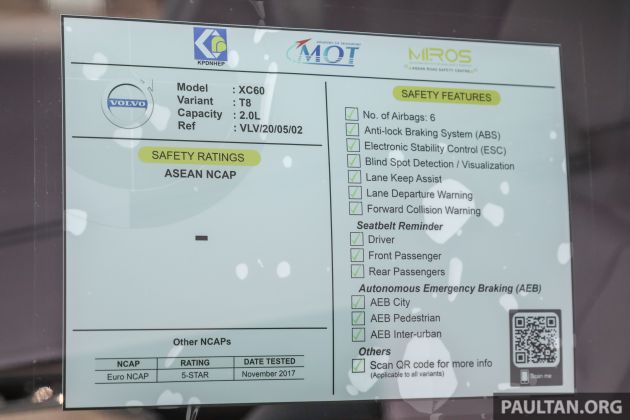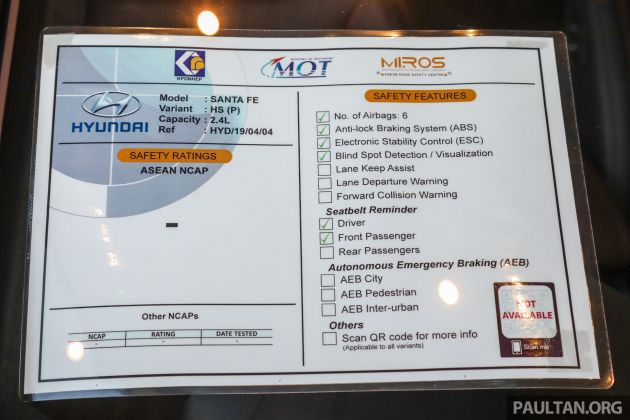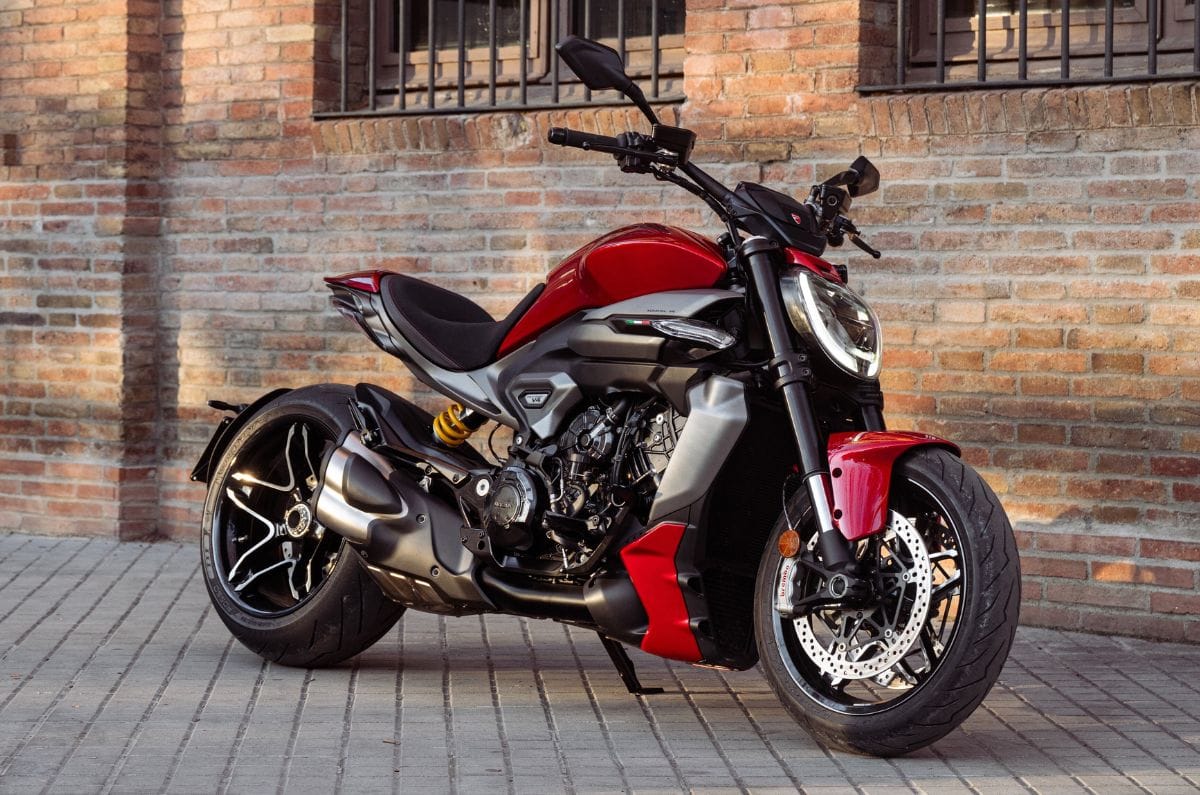ASEAN NCAP and KPDNHEP mandatory safety rating labels begin appearing on new cars in showrooms
The introduction of the CKD locally-assembled Volvo S60 T8 earlier today revealed the presence of an safety rating label from the system that was first announced a year ago by ASEAN NCAP and the ministry of domestic trade and consumer affairs (KPDNHEP), and endorsed by the transport ministry. The label was also spotted on a 2020 version of Hyundai Santa Fe R 2.2 CRDi Premium during a showroom photoshoot.
The labelling system was introduced in February last year, but its use only became mandatory on March 1 this year. The idea of the label, which is compulsory on all display vehicles in showrooms and on roadshows, is to enable consumers to determine the safety rating and equipment of a vehicle in simple, clear fashion.
These report cards, which are affixed to the front windscreen and side windows, display the car’s ASEAN NCAP safety rating (if applicable), along with crash test results from other new car assessment programmes around the world – the latter will be verified by the Malaysian Institute of Road Safety Research (MIROS) to ensure they match the safety specifications of vehicles sold locally.
The labels also list the particular variant’s safety features, including the airbag count and ABS, stability control, blind spot monitoring and lane departure warning as well as the availability of seat belt reminders and autonomous emergency braking features.
There’s also a QR code feature, in which the scanned code takes users to the ASEAN NCAP website to offer more in-depth safety info about the car – in the case of the Volvo, the code redirects to the car’s Euro NCAP test results. The QR code doesn’t look to be a mandatory feature, as evidenced by the Santa Fe label, which doesn’t have a link code.
At its introduction, ASEAN NCAP said that the safety rating label will prevent customer confusion due to misleading information and the misuse of NCAP ratings from other countries, as the safety specifications of the same model may differ from one country to the next.
This isn’t the only label being affixed to new cars in the showroom – there’s also a Malaysia Automotive, Robotics and IoT Institute (MARii) EEV label, which offers key specifications of a particular vehicle, including its fuel efficiency and CO2 emissions. Unlike the ASEAN NCAP label, the EEV label scheme – first seen on the Proton X70 CKD in February – is voluntary and not compulsory.
The post ASEAN NCAP and KPDNHEP mandatory safety rating labels begin appearing on new cars in showrooms appeared first on Paul Tan's Automotive News.
from Paul Tan's Automotive News
Read The Rest:paultan...




Post a Comment